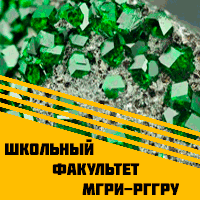Добрый день, Коллеги. Важное сообщение, просьба принять участие. Музей Ферсмана ищет помощь для реставрационных работ в помещении. Подробности по ссылке
Bulk crystal growth of electronic, optical & optoelectronic materials / Массовое выращивание кристаллов электронных, оптических и оптоэлектронных материалов
Whole industries currently rely on bulk-grown crystals of a variety of materials. These industries range from information technology, based on the ubiquitous silicon, through radiofrequency applications, using gallium arsenide, etc.,'to telecommunications and lighting, based on III-V compounds, to infrared imaging, based on cadmium mercury telluride, and to high-energy physics and medical imaging using scintillator materials. These materials are used either in the active mode, as for silicon, or in the passive mode where the bulk-grown material is used as a substrate on which to deposit a wide range of binary, ternary, quaternary, etc., compounds by several epitaxial growth processes. This book is an attempt to summarise the position in a number of these areas where bulk-grown crystals are central to particular industries. The book is aimed at senior under– and post-graduates in physics, chemistry, materials science, electrical engineering and optical engineering disciplines, as well as those employed in the various fields of crystal growth within the relevant industries. It is hoped that the former group will find the book readable both as an introductory text and as a useful guide to the literature. Workers in industry will hopefully find the book useful in bringing them up-to-date information in both their own and other areas of interest. To both groups of readers I trust that the book will prove interesting and a spur to further progress in this key area of technology. The first chapter deals with the most important semiconductor material, silicon. Siliconbased systems on 'chips' form the basis for the huge information technology industry, which is a fusion of computers and telecommunications. More demanding imageprocessing requirements in computers require improved throughput and yield of these chips on larger-diameter and high-quality silicon wafers. Currently 300–mm diameter is the industry standard, but R&D work has already taken place on 450–mm crystals (weight ~ 400 kilograms) as the next logical step in the evolution. A large effort is also underway on theoretical modelling of transport phenomena in these large growth systems to improve our understanding of the growth and defect-production processes. The next chapter discusses the second most studied semiconductor, GaAs, which is used in high-frequency pto– and microelectronic devices in a wide range of applications. Currently, crystals are in production at 150–mm diameter, with 200mm also recently demonstrated. <...>




